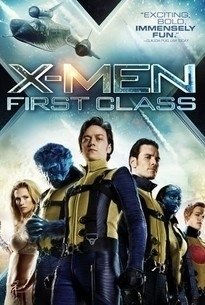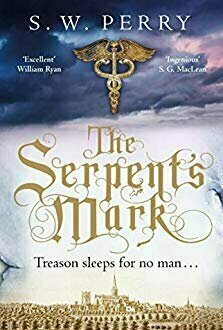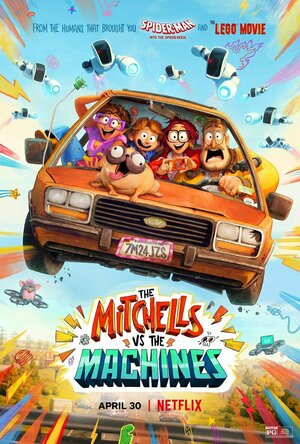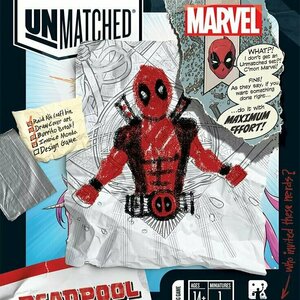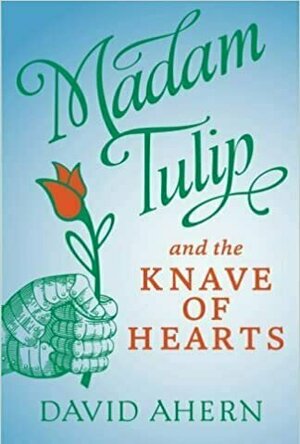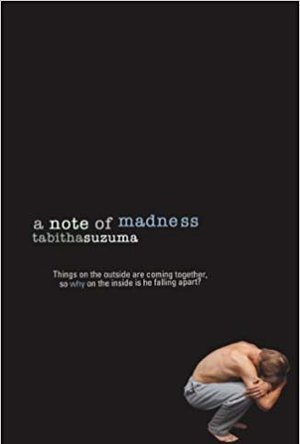Search
Search results
I was a big fan of Shanti Hershenson's other poetry book You Won't Know Her Name. Even though the subject matter was heavy, the poems were written extremely well. When I saw that Hershenson had published a companion poetry book titled I Know Her Name, I knew it was something I had to read. Shanti Hershenson, again, blew me away with how talented she is with her poetry.
While I Know Her Name isn't as dark or as heavy as its first book, You Won't Know Her Name, there were still some heavy themes throughout. Hershenson admits in this book that the nameless girl in You Won't Know Her Name was actually her (which I already suspected when I read the first book) and that all the poems in You Won't Know Her Name and I Know Her Name were written about what was happening and what had happened in regards to the bullying and sexual assault done at the hands of a "friend" while she was in junior high and her school's lack of caring. While I Know Her Name isn't a very long book, it still packs a big punch. The poetry is still amazingly written, and to know that they were written by such a young girl makes it even more so.
I Know Her Name is an emotional read, and my heart really went out to Shanti Hershenson whilst reading this. Her hurt, anger, sadness, frustrations, and all over emotions are easily conveyed with each poem. It broke my heart that she (and many other children) have to face bullying and abuse while the school does nothing about it. I felt like I was right beside Hershenson as she further tells her story through poetry although I felt helpless since I could only read the words and not physically do anything.
Trigger warnings for I Know Her Name include mentions of sexual assault (but not in detail), some profanity (but not much), bullying, depression, mentions of suicide and telling someone to kill themself, and violence.
All in all, I Know Her Name is such an emotional read written by a very talented teenager. It will definitely hit you with many feels and leave you angry at how the school failed this girl. Although this book can be read as a standalone, I would still read You Won't Know Her Name first just for more background and because it's so good. I would most definitely recommend I Know Her Name by Shanti Hershenson to those aged 14+ who are being bullied, have been bullied, or are the bullies themselves. This is a poetry book that won't disappoint.
While I Know Her Name isn't as dark or as heavy as its first book, You Won't Know Her Name, there were still some heavy themes throughout. Hershenson admits in this book that the nameless girl in You Won't Know Her Name was actually her (which I already suspected when I read the first book) and that all the poems in You Won't Know Her Name and I Know Her Name were written about what was happening and what had happened in regards to the bullying and sexual assault done at the hands of a "friend" while she was in junior high and her school's lack of caring. While I Know Her Name isn't a very long book, it still packs a big punch. The poetry is still amazingly written, and to know that they were written by such a young girl makes it even more so.
I Know Her Name is an emotional read, and my heart really went out to Shanti Hershenson whilst reading this. Her hurt, anger, sadness, frustrations, and all over emotions are easily conveyed with each poem. It broke my heart that she (and many other children) have to face bullying and abuse while the school does nothing about it. I felt like I was right beside Hershenson as she further tells her story through poetry although I felt helpless since I could only read the words and not physically do anything.
Trigger warnings for I Know Her Name include mentions of sexual assault (but not in detail), some profanity (but not much), bullying, depression, mentions of suicide and telling someone to kill themself, and violence.
All in all, I Know Her Name is such an emotional read written by a very talented teenager. It will definitely hit you with many feels and leave you angry at how the school failed this girl. Although this book can be read as a standalone, I would still read You Won't Know Her Name first just for more background and because it's so good. I would most definitely recommend I Know Her Name by Shanti Hershenson to those aged 14+ who are being bullied, have been bullied, or are the bullies themselves. This is a poetry book that won't disappoint.
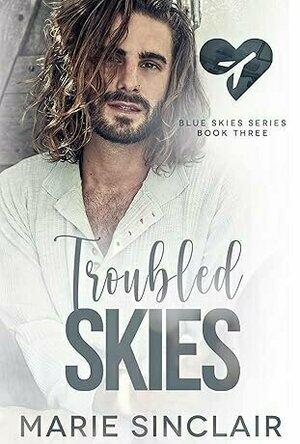
Troubled Skies (Blue Skies #3)
Book
When Red, White, and Royal Blue meets Below Deck… To say Ricky is having a bad year is an...
Contemporary MM Romance
Gareth von Kallenbach (980 KP) rated X-Men: First Class (2011) in Movies
Aug 7, 2019
When the “X-Men:The Last Stand” failed to score big with critics and audiences in 2006, many fans began to wonder if they would ever see their favorite mutant superhero team on screen anytime soon. Despite mixed reviews, 2009’s standalone film “Wolverine“, did sufficient box office numbers to warrant a sequel which is currently in development, indicating that the likely future of the series was with standalone character films.
Then 20th Century Fox decided to tell a team-based origin story that focuses on the early days of the X-Men and how they became the team that they are today. This is a bit of a controversial move as it involves recasting several roles to play younger versions of beloved characters.
The result is X-Men: First Class which stars Scottish actor James McAvoy as Charles Xavier, a brilliant young academic who hides his unique and amazing telepathic gifts from the world. When a chance encounter proves to Charles that there are others in the world who share his gifts he dedicates his studies to unlocking the mysteries of genetic mutations and their possibilities.
At the same time a young man named Eric Lehnsherr (Michael Fassbender), has embarked on a path of destruction and revenge against those who wronged and tormented him and his family during the Nazi occupation of their native Poland. Eric’s main target is man who now calls himself Sebastian Shaw (Kevin Bacon), who has surrounded himself with a team of skilled mutants and is manipulating US and Russia to the brink of nuclear war, for his own evil purposes.
When CIA Agent MacTaggart (Rose Byrne), learns of Shaw’s plans, she recruits Xavier, not knowing that he and his friend Raven (Jennifer Lawrence) are mutants themselves, with the hopes of understanding their new enemy and mounting a proper defense.
When the truth of his true nature is revealed, Charles teems with MacTaggart and scientist Hank McCoy (Nicholas Hoult), to locate and recruit other gifted individuals to their cause. Fate steps in when Erik and Charles meet and eventually become friends over there mutual pursuit of Shaw. Despite a great deal of understanding between the two individuals, Eric is intent upon killing Shaw. He warns his new friend not to trust humans, as his time under Nazi control taught him that it’s only a matter of time until he and his fellow mutants are targeted for extinction by the world. Despite this the Eric and Charles recruit and train a team to prepare to face Shaw and his followers, with the fate of the world hanging in the balance.
The film starts off well and it was very enjoyable to see a deeper side of the characters. From young Charles hitting on women in bars and making jokes about losing his full head of hair to the deadly side of Eric and his abilities as well as the early relationship between the iconic characters. Somewhere along the way the film loses its initial momentum as the plot of the film takes a while to get going. As good as the cast is, they need something to do and after numerous debates and a few training and recruitment segments the film became somewhat boring. There simply was not a lot of action to sustain the plot.
Kevin Bacon was an interesting choice for the villain. He did a good job, although watching him strut around I kept expecting him to break into dance at any moment. Another issue I had was that some of the supporting characters were basically throwaway as I cared little about their stories and outcomes. Only the characters of Raven, Eric, and Charles held any real interest for me and watching their interplay with one another was one of the strong points of the film.
As the film move toward the finale there were several things about it that did not work for me starting with the makeup for The Beast. Complete with spectacles it was almost a laughable look that brought to mind Jason Bateman in “Teen Wolf 2“. The fact that the character was annoying as well did very little to help.
The biggest issue I had with the film was that after all this buildup the finale was actually very ho-hum and while it did contain some visually nice moments, I do not feel the action balanced with the storytelling, certainly not to the extent that audiences expect from nor require of a summer blockbuster.
There are a couple of moments in the film that will certainly be questioned by fans of the series as well as scenes which conflict with information from the earlier films in the series. It seems certain elements of continuity have been omitted for creative license. I will not spoil those here but suffice it to say that if my wife, who is a casual fan of the series, was able to note conflicts and discrepancies between this film and a previous film, then certainly hard-core fans may have some real issues.
The film does a good job with explaining the origin and nature of the characters, but fails to provide an adventure worthy of the effort and instead plays out in a very underwhelming fashion. Director Matthew Vaughn proved himself highly adept with adventure films when he produced “Kick Ass“, and other action-oriented films. He is clearly a fan of comics and action and I would love to have seen what could’ve resulted had he been given carte blanche with the film.
In the end, “X-Men: First Class“, for me was more entertaining than the previous ensemble films, but fails to live up to its potential and severely lacks enough action to sustain the early momentum of the film.
Then 20th Century Fox decided to tell a team-based origin story that focuses on the early days of the X-Men and how they became the team that they are today. This is a bit of a controversial move as it involves recasting several roles to play younger versions of beloved characters.
The result is X-Men: First Class which stars Scottish actor James McAvoy as Charles Xavier, a brilliant young academic who hides his unique and amazing telepathic gifts from the world. When a chance encounter proves to Charles that there are others in the world who share his gifts he dedicates his studies to unlocking the mysteries of genetic mutations and their possibilities.
At the same time a young man named Eric Lehnsherr (Michael Fassbender), has embarked on a path of destruction and revenge against those who wronged and tormented him and his family during the Nazi occupation of their native Poland. Eric’s main target is man who now calls himself Sebastian Shaw (Kevin Bacon), who has surrounded himself with a team of skilled mutants and is manipulating US and Russia to the brink of nuclear war, for his own evil purposes.
When CIA Agent MacTaggart (Rose Byrne), learns of Shaw’s plans, she recruits Xavier, not knowing that he and his friend Raven (Jennifer Lawrence) are mutants themselves, with the hopes of understanding their new enemy and mounting a proper defense.
When the truth of his true nature is revealed, Charles teems with MacTaggart and scientist Hank McCoy (Nicholas Hoult), to locate and recruit other gifted individuals to their cause. Fate steps in when Erik and Charles meet and eventually become friends over there mutual pursuit of Shaw. Despite a great deal of understanding between the two individuals, Eric is intent upon killing Shaw. He warns his new friend not to trust humans, as his time under Nazi control taught him that it’s only a matter of time until he and his fellow mutants are targeted for extinction by the world. Despite this the Eric and Charles recruit and train a team to prepare to face Shaw and his followers, with the fate of the world hanging in the balance.
The film starts off well and it was very enjoyable to see a deeper side of the characters. From young Charles hitting on women in bars and making jokes about losing his full head of hair to the deadly side of Eric and his abilities as well as the early relationship between the iconic characters. Somewhere along the way the film loses its initial momentum as the plot of the film takes a while to get going. As good as the cast is, they need something to do and after numerous debates and a few training and recruitment segments the film became somewhat boring. There simply was not a lot of action to sustain the plot.
Kevin Bacon was an interesting choice for the villain. He did a good job, although watching him strut around I kept expecting him to break into dance at any moment. Another issue I had was that some of the supporting characters were basically throwaway as I cared little about their stories and outcomes. Only the characters of Raven, Eric, and Charles held any real interest for me and watching their interplay with one another was one of the strong points of the film.
As the film move toward the finale there were several things about it that did not work for me starting with the makeup for The Beast. Complete with spectacles it was almost a laughable look that brought to mind Jason Bateman in “Teen Wolf 2“. The fact that the character was annoying as well did very little to help.
The biggest issue I had with the film was that after all this buildup the finale was actually very ho-hum and while it did contain some visually nice moments, I do not feel the action balanced with the storytelling, certainly not to the extent that audiences expect from nor require of a summer blockbuster.
There are a couple of moments in the film that will certainly be questioned by fans of the series as well as scenes which conflict with information from the earlier films in the series. It seems certain elements of continuity have been omitted for creative license. I will not spoil those here but suffice it to say that if my wife, who is a casual fan of the series, was able to note conflicts and discrepancies between this film and a previous film, then certainly hard-core fans may have some real issues.
The film does a good job with explaining the origin and nature of the characters, but fails to provide an adventure worthy of the effort and instead plays out in a very underwhelming fashion. Director Matthew Vaughn proved himself highly adept with adventure films when he produced “Kick Ass“, and other action-oriented films. He is clearly a fan of comics and action and I would love to have seen what could’ve resulted had he been given carte blanche with the film.
In the end, “X-Men: First Class“, for me was more entertaining than the previous ensemble films, but fails to live up to its potential and severely lacks enough action to sustain the early momentum of the film.
Ivana A. | Diary of Difference (1171 KP) rated The Serpent's Mark in Books
Feb 3, 2020
<a href="https://diaryofdifference.com/">Blog</a>; | <a href="https://www.facebook.com/diaryofdifference/">Facebook</a>; | <a href="https://twitter.com/DiaryDifference">Twitter</a>; | <a href="https://www.instagram.com/diaryofdifference/">Instagram</a>; | <a href="https://www.pinterest.co.uk/diaryofdifference/pins/">Pinterest</a>;
<b>Nicholas Shelby Series</b>
#1 <a href="https://www.goodreads.com/book/show/39904044-the-angel-s-mark">The Angel's Mark</a> - Not Read
#2 <a href="https://www.goodreads.com/review/show/2849284383">The Serpent's Mark</a> - DNF
<img src="https://diaryofdifference.com/wp-content/uploads/2019/06/Book-Review-Banner-1.png"/>;
<b><i>The first book in 2019 that I didn't manage to finish is The Serpent's Mark by S.W. Perry.</i></b>
I am sad and disappointed. If you know me, you will know how I don't want to leave things unfinished, especially when reading books. I want to finish every book I read, so I can have a thorough opinion and valid comments.
I stopped reading this book at page 75, which is very early days, but I just couldn't continue because of a few points.
Before I start, I need to mention all the things that attracted me to this book in the first place. I love mysteries, and this book promised conspiracy, murder and espionage in Elizabethan London. It is set in the year 1591, where a doctor is investigated of his questionable practices. This was, by itself a promising start. And if you haven't seen the beautiful cover already, please do. It's art to have this book on your shelves.
However, while reading those 75 pages, I haven't encountered any murder. Conspiracy and espionage maybe, but it is so subtle, that everything else comes in first place, while I am here, flipping pages and desperately waiting for something to happen.
A book that contains a lot of politics and religion in a same chapter is just not the book for me. As a person that moved into the UK, I know a little bit about politics and not much about history politics, but I am also not very interested in it either. Documentaries, yes - but books for pleasure, not quite so much. This book was over-flooding with politics and religion, and it is something I just couldn't put past me. After deciding to DNF it, I also realized that it was a second book of a series, but can also be read as a standalone.
I wish I enjoyed it, but I just couldn't. However, if the book seems like something you might enjoy, please go for it, read it, and let me know how it went. <b>We all have different tastes in book - and that's OKAY! :)</b>
Thank you to ReadersFirst, a UK based website that sends me books every month in exchange for my honest reviews. What you do it absolutely amazing!
<a href="https://diaryofdifference.com/">Blog</a>; | <a href="https://www.facebook.com/diaryofdifference/">Facebook</a>; | <a href="https://twitter.com/DiaryDifference">Twitter</a>; | <a href="https://www.instagram.com/diaryofdifference/">Instagram</a>; | <a href="https://www.pinterest.co.uk/diaryofdifference/pins/">Pinterest</a>;
<b>Nicholas Shelby Series</b>
#1 <a href="https://www.goodreads.com/book/show/39904044-the-angel-s-mark">The Angel's Mark</a> - Not Read
#2 <a href="https://www.goodreads.com/review/show/2849284383">The Serpent's Mark</a> - DNF
<img src="https://diaryofdifference.com/wp-content/uploads/2019/06/Book-Review-Banner-1.png"/>;
<b><i>The first book in 2019 that I didn't manage to finish is The Serpent's Mark by S.W. Perry.</i></b>
I am sad and disappointed. If you know me, you will know how I don't want to leave things unfinished, especially when reading books. I want to finish every book I read, so I can have a thorough opinion and valid comments.
I stopped reading this book at page 75, which is very early days, but I just couldn't continue because of a few points.
Before I start, I need to mention all the things that attracted me to this book in the first place. I love mysteries, and this book promised conspiracy, murder and espionage in Elizabethan London. It is set in the year 1591, where a doctor is investigated of his questionable practices. This was, by itself a promising start. And if you haven't seen the beautiful cover already, please do. It's art to have this book on your shelves.
However, while reading those 75 pages, I haven't encountered any murder. Conspiracy and espionage maybe, but it is so subtle, that everything else comes in first place, while I am here, flipping pages and desperately waiting for something to happen.
A book that contains a lot of politics and religion in a same chapter is just not the book for me. As a person that moved into the UK, I know a little bit about politics and not much about history politics, but I am also not very interested in it either. Documentaries, yes - but books for pleasure, not quite so much. This book was over-flooding with politics and religion, and it is something I just couldn't put past me. After deciding to DNF it, I also realized that it was a second book of a series, but can also be read as a standalone.
I wish I enjoyed it, but I just couldn't. However, if the book seems like something you might enjoy, please go for it, read it, and let me know how it went. <b>We all have different tastes in book - and that's OKAY! :)</b>
Thank you to ReadersFirst, a UK based website that sends me books every month in exchange for my honest reviews. What you do it absolutely amazing!
<a href="https://diaryofdifference.com/">Blog</a>; | <a href="https://www.facebook.com/diaryofdifference/">Facebook</a>; | <a href="https://twitter.com/DiaryDifference">Twitter</a>; | <a href="https://www.instagram.com/diaryofdifference/">Instagram</a>; | <a href="https://www.pinterest.co.uk/diaryofdifference/pins/">Pinterest</a>;
Emma @ The Movies (1786 KP) rated The Mitchells vs The Machines (2021) in Movies
Aug 11, 2021
I was originally going to post a round up of films I'd seen a just give a quick overview of my thoughts. But as I started writing, this review got longer and longer as I realised that it was okay for me to bore you with me frothing at the mouth with excitement.
Having seen the Connected trailer, as it was previously called, I knew I wanted to see it, and I was fairly certain I was going to enjoy it. It looked funny with some great characters and a nice bit of family drama thrown in. I don't think I was really prepared for how much I was going to enjoy it though.
In a last ditch attempt to spend time with his daughter before she heads off to college, Rick cancels her travel plans in favour of a family road trip. The tensions run high in the car, but that's nothing compared with the robopocalypse that's about to erupt around them... and if the pressure of family bonding wasn't enough, just wait until you're humanities last hope.
The idea behind The Mitchells vs the Machines is really quite nice. Being constantly connected to their devices has meant the divide between tech-phobic dad and digital creative daughter is growing by the day, and all she wants to do is get away. It does make you think about the way you interact with devices, and how reliant on them we've become... but we're not quite at the robot uprising so far... just keep an eye on Alexa.
The Mitchell family voice cast worked great together. I adore Maya Rudolph, and combined with just the right amount of dad from Danny McBride, they made a well balanced parental unit. And Katie (voiced by Abbi Jacobson, who also voices Bean in Disenchantment) was the perfect balance of stubborn teen and living sister.
Of course the obvious MVP of the film is Monchi the dog, voiced by Doug the pug. I will hear no arguments on this point... admittedly, mum does make a last minute surge for the top spot, but Monchi was consistent throughout.
Sony have managed to create a very amusing apocalyptic world. The robot army is great, and the personalities they display are so amusing, but even the other machines within the film have wonderful quirky little characters. The design in the world is magnificent, and well thought out, particularly when we get to the climax of the film.
I genuinely don't have a bad word to say about this film, it was action packed with something for everyone. There's speculation about a second film I believe, but I hope that doesn't develop into anything. Mitchells vs the Machines was a great standalone film, and there's no real follow up potential as it is. Take the win, pick up another idea and run with it.
Originally posted on: https://emmaatthemovies.blogspot.com/2021/08/the-mitchells-vs-machines-movie-review.html
Having seen the Connected trailer, as it was previously called, I knew I wanted to see it, and I was fairly certain I was going to enjoy it. It looked funny with some great characters and a nice bit of family drama thrown in. I don't think I was really prepared for how much I was going to enjoy it though.
In a last ditch attempt to spend time with his daughter before she heads off to college, Rick cancels her travel plans in favour of a family road trip. The tensions run high in the car, but that's nothing compared with the robopocalypse that's about to erupt around them... and if the pressure of family bonding wasn't enough, just wait until you're humanities last hope.
The idea behind The Mitchells vs the Machines is really quite nice. Being constantly connected to their devices has meant the divide between tech-phobic dad and digital creative daughter is growing by the day, and all she wants to do is get away. It does make you think about the way you interact with devices, and how reliant on them we've become... but we're not quite at the robot uprising so far... just keep an eye on Alexa.
The Mitchell family voice cast worked great together. I adore Maya Rudolph, and combined with just the right amount of dad from Danny McBride, they made a well balanced parental unit. And Katie (voiced by Abbi Jacobson, who also voices Bean in Disenchantment) was the perfect balance of stubborn teen and living sister.
Of course the obvious MVP of the film is Monchi the dog, voiced by Doug the pug. I will hear no arguments on this point... admittedly, mum does make a last minute surge for the top spot, but Monchi was consistent throughout.
Sony have managed to create a very amusing apocalyptic world. The robot army is great, and the personalities they display are so amusing, but even the other machines within the film have wonderful quirky little characters. The design in the world is magnificent, and well thought out, particularly when we get to the climax of the film.
I genuinely don't have a bad word to say about this film, it was action packed with something for everyone. There's speculation about a second film I believe, but I hope that doesn't develop into anything. Mitchells vs the Machines was a great standalone film, and there's no real follow up potential as it is. Take the win, pick up another idea and run with it.
Originally posted on: https://emmaatthemovies.blogspot.com/2021/08/the-mitchells-vs-machines-movie-review.html
Purple Phoenix Games (2266 KP) rated Unmatched: Deadpool Expansion in Tabletop Games
Jul 8, 2021
In the expansion review series, we take a look at a game expansion to discuss whether it is a necessary purchase/addition to one’s collection.
This breakdown is for the expansion for the hit game, and Golden Feather Award-winning, Unmatched system entitled Unmatched: Deadpool.
This expansion adds the amazing Marvel character Deadpool to the game system, to expand any standalone set. It ships with a great DP mini, his HP dial, and a deck of 31 hilarious and ridiculous cards. It cannot be played without a base set, and I have used him with both Cobble & Fog as well as the Battle of Legends, Volume 1 sets.
DISCLAIMER: We were provided a prototype copy of this game expansion for the purposes of this review. You are invited to pre-order from the Mondo website or purchase from any retailers stocking it once released. -T
Does this expansion add a lot to the gameplay of original Unmatched? I very much think so. If you have yet to play any version of Unmatched, please do yourself a favor and remedy this at once. When you have played it, come back to finish the review.
What Deadpool lacks in full game components, it sure makes up for in uniqueness of character play. No more will the player need to strategize and synergize throughout the game. In fact, the Deadpool player now has access to so many crazy cards that really break the rules and make him so much harder to overcome. Deadpool has several healing cards in his deck, but also has a special healing ability that triggers every turn he attacks. I suppose now I realize why DP has an HP dial with a max HP of 10. I really do not want to spoil too much about what can be found in the Deadpool deck, but just know there are many chimichangas, many healing, and many rulebreaking possibilities.
Is it absolutely necessary to invest in the Deadpool expansion to enjoy Unmatched? No, but if you are a fan of Marvel or the character, it is a must-buy. However, if you (or the people with whom you play) are prudish sticks in the mud, then totally pass on it. That leaves more for the rest of us.
Official recommendation: I cannot say enough great things about Unmatched and every character I have played with it. Each character is certainly unique, but I will venture to say that you will be hard pressed to find a character even more unique than Deadpool. He offers such hilarity that I want to use him nearly every game. Now, knowing all the cards that come in his deck can tempt his players to manipulate the environment before starting the game, so do take care if you attempt to play AGAINST a Deadpool player. That’s the warning I will give, but I officially (and highly) recommend all fans of Marvel, Deadpool, and the Unmatched system to grab a copy of this small expansion.
This breakdown is for the expansion for the hit game, and Golden Feather Award-winning, Unmatched system entitled Unmatched: Deadpool.
This expansion adds the amazing Marvel character Deadpool to the game system, to expand any standalone set. It ships with a great DP mini, his HP dial, and a deck of 31 hilarious and ridiculous cards. It cannot be played without a base set, and I have used him with both Cobble & Fog as well as the Battle of Legends, Volume 1 sets.
DISCLAIMER: We were provided a prototype copy of this game expansion for the purposes of this review. You are invited to pre-order from the Mondo website or purchase from any retailers stocking it once released. -T
Does this expansion add a lot to the gameplay of original Unmatched? I very much think so. If you have yet to play any version of Unmatched, please do yourself a favor and remedy this at once. When you have played it, come back to finish the review.
What Deadpool lacks in full game components, it sure makes up for in uniqueness of character play. No more will the player need to strategize and synergize throughout the game. In fact, the Deadpool player now has access to so many crazy cards that really break the rules and make him so much harder to overcome. Deadpool has several healing cards in his deck, but also has a special healing ability that triggers every turn he attacks. I suppose now I realize why DP has an HP dial with a max HP of 10. I really do not want to spoil too much about what can be found in the Deadpool deck, but just know there are many chimichangas, many healing, and many rulebreaking possibilities.
Is it absolutely necessary to invest in the Deadpool expansion to enjoy Unmatched? No, but if you are a fan of Marvel or the character, it is a must-buy. However, if you (or the people with whom you play) are prudish sticks in the mud, then totally pass on it. That leaves more for the rest of us.
Official recommendation: I cannot say enough great things about Unmatched and every character I have played with it. Each character is certainly unique, but I will venture to say that you will be hard pressed to find a character even more unique than Deadpool. He offers such hilarity that I want to use him nearly every game. Now, knowing all the cards that come in his deck can tempt his players to manipulate the environment before starting the game, so do take care if you attempt to play AGAINST a Deadpool player. That’s the warning I will give, but I officially (and highly) recommend all fans of Marvel, Deadpool, and the Unmatched system to grab a copy of this small expansion.
BookInspector (124 KP) rated Madam Tulip and the Knave of Hearts (Madam Tulip, #2) in Books
Sep 24, 2020
For more reviews please visit https://bbookinspector.wordpress.com
This book is a second part in Madam Tulip series, and normally, the first part is the one to wow readers to come back for more, but in this case, the second part was way better for me than the first one.
The first part was more of an introduction to Madam Tulip and what she is capable of, in this part things get more serious. Another difference was that, the first part was more like cosy mysteries; the second one loses its coziness and is more action filled, and more intense. Once again, Ahern chose his characters very skillfully. We have some which are incredibly eccentric and real personalities, and others, who are down to earth and very realistic. I honestly do not know how Ahern done his research for his books, but the details about royalty, elegance, old historical houses were a true pleasure to read about. Moreover, the details about historical house and laws of royal inheritance were really accurate and incredibly believable, so, well done to the author.
The narrative was once again told from Derry’s perspective, and in this book I was missing multiple perspectives, as I believe, it helps to understand other characters way better. I really enjoyed that Ahern played with this narrative more, incorporating different approaches in Derry’s life (working for her mom). In this novel there was less of Madam Tulip herself, and more of Derry and her bad luck to end up in dangerous situations. Another well done to the author for increasing the level of action in this novel, I really enjoyed unexpected turns and unusual places chosen for it. One thing what left me debating with myself was the “bad guy” in this book, he was very well picked, but at the same time very obvious and predictable. Even though this book is a second part in the series, it can easily be a standalone mystery, because Ahern explained everything a “new reader” needs to know.
The writing style of this book changed as well. It is more skillful and there are more difficult terms used in this novel, but it did not make it difficult to read, it just felt richer. The chapters are decent length, and once again, divided into smaller parts. I was little bit disappointed with the ending of this book, author used the same technique as in first book and it does not leave me satisfied. I WANT JUSTICE!!! :) So, to conclude, I was really amused with this book and I do recommend to give it a go. It left me very pleasantly surprised with more action, aristocratic and incredibly complex and entertaining characters, the interesting secrets, findings, and incredibly annoying and horrible Derry’s mom (can’t stand that woman now).
Was given this book by author for honest review.
This book is a second part in Madam Tulip series, and normally, the first part is the one to wow readers to come back for more, but in this case, the second part was way better for me than the first one.
The first part was more of an introduction to Madam Tulip and what she is capable of, in this part things get more serious. Another difference was that, the first part was more like cosy mysteries; the second one loses its coziness and is more action filled, and more intense. Once again, Ahern chose his characters very skillfully. We have some which are incredibly eccentric and real personalities, and others, who are down to earth and very realistic. I honestly do not know how Ahern done his research for his books, but the details about royalty, elegance, old historical houses were a true pleasure to read about. Moreover, the details about historical house and laws of royal inheritance were really accurate and incredibly believable, so, well done to the author.
The narrative was once again told from Derry’s perspective, and in this book I was missing multiple perspectives, as I believe, it helps to understand other characters way better. I really enjoyed that Ahern played with this narrative more, incorporating different approaches in Derry’s life (working for her mom). In this novel there was less of Madam Tulip herself, and more of Derry and her bad luck to end up in dangerous situations. Another well done to the author for increasing the level of action in this novel, I really enjoyed unexpected turns and unusual places chosen for it. One thing what left me debating with myself was the “bad guy” in this book, he was very well picked, but at the same time very obvious and predictable. Even though this book is a second part in the series, it can easily be a standalone mystery, because Ahern explained everything a “new reader” needs to know.
The writing style of this book changed as well. It is more skillful and there are more difficult terms used in this novel, but it did not make it difficult to read, it just felt richer. The chapters are decent length, and once again, divided into smaller parts. I was little bit disappointed with the ending of this book, author used the same technique as in first book and it does not leave me satisfied. I WANT JUSTICE!!! :) So, to conclude, I was really amused with this book and I do recommend to give it a go. It left me very pleasantly surprised with more action, aristocratic and incredibly complex and entertaining characters, the interesting secrets, findings, and incredibly annoying and horrible Derry’s mom (can’t stand that woman now).
Was given this book by author for honest review.
Eleanor Luhar (47 KP) rated A Note of Madness (Flynn Laukonen, #1) in Books
Jun 24, 2019
Tabitha Suzuma is quickly becoming one of my favourite authors.
I didn't realise this was the first of two books, but it reads fine as a standalone novel anyway. I hadn't intended to read on, but I just love Suzuma's writing too much. I've reserved the next novel at the library.
I found this quite similar to Hurt in a couple of ways; firstly, the protagonist is a young male who is experiencing something very unpleasant but important to talk about. Instead of rape, as in Hurt, this time the topic is mental health. Flynn's got the whole world at his feet, but suddenly he's up all night composing or drowning himself in alcohol and aspirin. Everything feels wrong and he doesn't know why. His flatmate, Harry, calls Flynn's brother in to help. He's a doctor and soon realises Flynn needs proper help. After one incorrect diagnosis and several relapses, Flynn finally feels the world go back to normal.
Although the ending is typically "hopeful" (which you can only expect, really - it's not gonna be very helpful for kids to read stories where you never recover from your mental illness) it still manages to be realistic rather than overly positive and optimistic. For example, Flynn is offered a couple of amazing experiences in this book, the first of which he is determined to take. But he doesn't, because his health declines so much. I can tell you how horrible it is when you have your heart set on something but your mental health holds you back... Sometimes you just can't do it. Flynn's health gets so bad that his brother takes him away on the eve of his big concert (he's a music uni student).
There's also a romance line through this, which I gather will be furthered in the next book. Flynn doesn't pay much attention to it - doesn't even notice it - due to his condition, until it's too late and he's messed it up. Jennah is an old crush of his, recently parted from her boyfriend for a mysterious "other guy". Flynn just doesn't put 2 and 2 together, though, and assumes she could never love him because he's so hopeless and talentless and depressed. Things really get bad when they argue about it during one of Flynn's relapses, and she goes missing for the night. I must admit that I immediately feared the worst after what happened in Hurt, but it was eventually resolved. I am very interested in reading how Flynn's mental illness impacts his relationship in the future.
This is a great topic to address, especially in males. The episodes may be a little exaggerated but then I suppose that is how some people experience it. It's different for everyone. I really appreciate the age chosen, too, because people often forget that mental illnesses don't only develop when you're twelve or thirteen. 5 stars; a fantastic book and a fantastic author.
I didn't realise this was the first of two books, but it reads fine as a standalone novel anyway. I hadn't intended to read on, but I just love Suzuma's writing too much. I've reserved the next novel at the library.
I found this quite similar to Hurt in a couple of ways; firstly, the protagonist is a young male who is experiencing something very unpleasant but important to talk about. Instead of rape, as in Hurt, this time the topic is mental health. Flynn's got the whole world at his feet, but suddenly he's up all night composing or drowning himself in alcohol and aspirin. Everything feels wrong and he doesn't know why. His flatmate, Harry, calls Flynn's brother in to help. He's a doctor and soon realises Flynn needs proper help. After one incorrect diagnosis and several relapses, Flynn finally feels the world go back to normal.
Although the ending is typically "hopeful" (which you can only expect, really - it's not gonna be very helpful for kids to read stories where you never recover from your mental illness) it still manages to be realistic rather than overly positive and optimistic. For example, Flynn is offered a couple of amazing experiences in this book, the first of which he is determined to take. But he doesn't, because his health declines so much. I can tell you how horrible it is when you have your heart set on something but your mental health holds you back... Sometimes you just can't do it. Flynn's health gets so bad that his brother takes him away on the eve of his big concert (he's a music uni student).
There's also a romance line through this, which I gather will be furthered in the next book. Flynn doesn't pay much attention to it - doesn't even notice it - due to his condition, until it's too late and he's messed it up. Jennah is an old crush of his, recently parted from her boyfriend for a mysterious "other guy". Flynn just doesn't put 2 and 2 together, though, and assumes she could never love him because he's so hopeless and talentless and depressed. Things really get bad when they argue about it during one of Flynn's relapses, and she goes missing for the night. I must admit that I immediately feared the worst after what happened in Hurt, but it was eventually resolved. I am very interested in reading how Flynn's mental illness impacts his relationship in the future.
This is a great topic to address, especially in males. The episodes may be a little exaggerated but then I suppose that is how some people experience it. It's different for everyone. I really appreciate the age chosen, too, because people often forget that mental illnesses don't only develop when you're twelve or thirteen. 5 stars; a fantastic book and a fantastic author.

Video 2 Photo - extract still pictures from movies
Photo & Video and Utilities
App
Video 2 Photo allows you to export one or more high quality photos from your videos (and Live...

